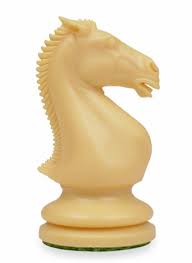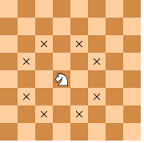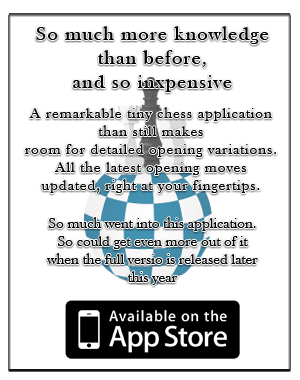KNIGHT
 A minor piece, represented by the character N that has had a move of a fixed length that has not changed throughout the entire history of chess.
A minor piece, represented by the character N that has had a move of a fixed length that has not changed throughout the entire history of chess.
There are many ways to describe the knight’s move but the idea is always the same. There are two parts: the first – two squares in any direction and the second – one square off the rank or file along which the first part of the move was made.
Unlike other pieces, the knight can jump over other pieces. After each move, the knight finds itself on a square of opposite color. It is equal to a bishop or approximately three pawns.
The maximum number of squares it can move to or attack is eight if located on the center of the board; the minimum is two if located on the corner of the board. Therefore, it’s potential increases in the center. In most European languages, the name of the piece is associated with cavalry. It is only in German where it is called Springer, which means
In most European languages, the name of the piece is associated with cavalry. It is only in German where it is called Springer, which means leaper.
The Staunton pattern knight is modeled from the famous Greek horse of the Elgin Marbles in the British Museum of London.



